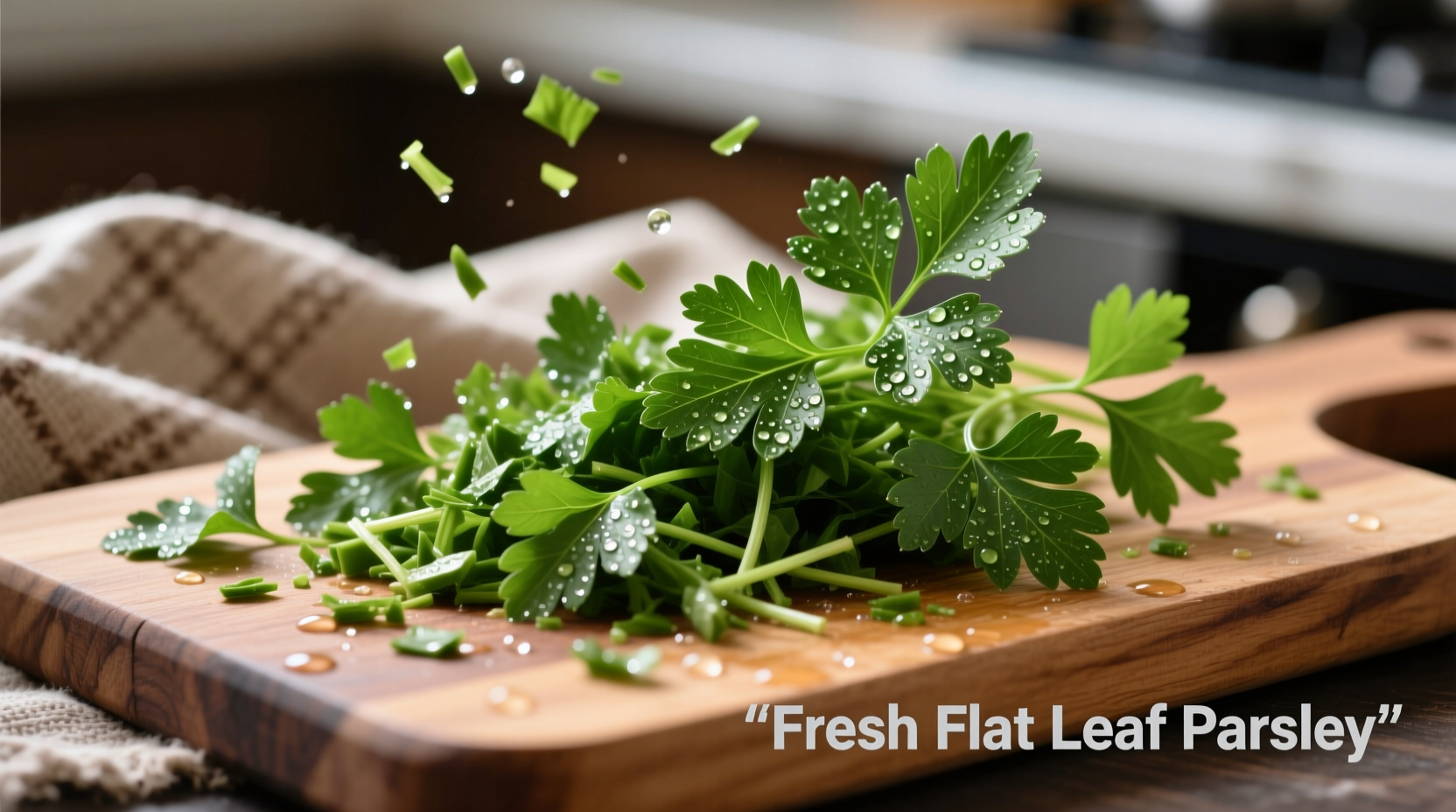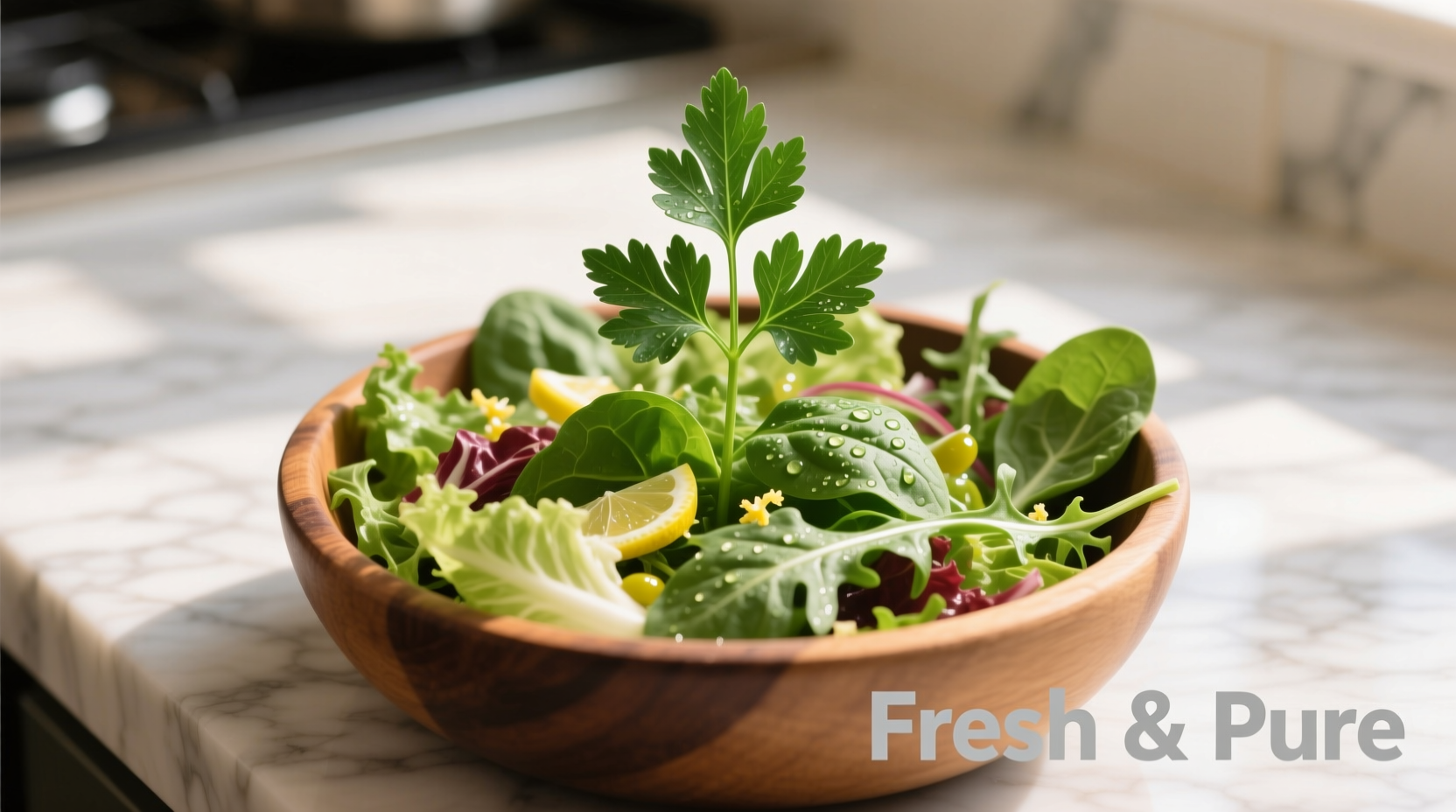When you add parsley to your salad, you're not just garnishing—you're elevating the entire dish. This humble herb delivers a bright, clean flavor that cuts through rich ingredients while contributing significant vitamins and antioxidants. Professional chefs consistently reach for parsley because it's the secret weapon that turns simple salads into restaurant-quality creations.
Why Parsley Belongs in Every Salad
Parsley isn't just a pretty garnish—it's a flavor powerhouse that enhances your entire salad experience. Unlike many herbs that dominate a dish, parsley provides a subtle yet distinctive freshness that complements rather than competes with other ingredients. The herb contains apiol and myristicin, natural compounds that create its characteristic clean taste while offering anti-inflammatory benefits.
According to USDA nutritional data, just one-quarter cup of fresh parsley delivers more than your daily requirement of vitamin K and significant amounts of vitamins A and C. When added to salads, it transforms them from simple side dishes into nutrient-dense meals that support bone health, immunity, and cellular function.
Flat Leaf vs Curly Parsley: The Salad Showdown
| Characteristic | Flat Leaf (Italian) Parsley | Curly Parsley |
|---|---|---|
| Flavor Profile | Bright, robust, slightly peppery | Milder, more delicate |
| Texture | Firmer, holds up better in salads | Softer, more delicate |
| Best Salad Applications | Robust salads, grain bowls, Mediterranean dishes | Delicate green salads, garnishes |
| Storage Life | 7-10 days refrigerated | 5-7 days refrigerated |
Professional chefs overwhelmingly prefer flat leaf parsley for salads because its stronger flavor holds up against dressings and other ingredients. Curly parsley works well as a garnish but often gets lost in mixed salads. When selecting parsley, look for vibrant green leaves without yellowing or wilting—this indicates peak freshness and flavor.
Preparing Parsley for Maximum Salad Impact
The way you prepare parsley dramatically affects its performance in salads. Follow these chef-recommended techniques:
- Wash properly: Soak parsley in cold water for 2 minutes, then lift out (don't pour) to leave sediment behind. Dry thoroughly using a salad spinner.
- Remove tough stems: Hold the bunch by the stem ends and run your fingers downward to strip leaves efficiently.
- Chop strategically: For most salads, chop parsley finely to distribute flavor evenly. For grain salads, leave some leaves whole for visual appeal.
- Add at the right time: Toss parsley with other salad ingredients just before serving to maintain its vibrant color and fresh flavor.
Adding parsley too early causes it to wilt and lose its bright flavor. The optimal moment is when you're combining all salad components with dressing—this preserves its texture while allowing flavors to meld slightly.

Perfect Salad Pairings for Parsley
Certain ingredients create magical combinations when paired with parsley in salads. These professional-tested pairings deliver restaurant-quality results:
- Lemon vinaigrette: The citrus acidity enhances parsley's natural brightness
- Toasted pine nuts: Adds complementary nuttiness that balances parsley's freshness
- Feta or goat cheese: The saltiness contrasts beautifully with parsley's clean flavor
- Cherry tomatoes: Creates a Mediterranean flavor profile that sings
- Quinoa or farro: Provides hearty texture that stands up to parsley's robust flavor
According to culinary research from the Culinary Institute of America, parsley's flavor compounds interact particularly well with citrus acids and healthy fats like olive oil. This explains why classic Mediterranean salads featuring lemon-olive oil dressings showcase parsley so effectively.
Three Simple Salad Recipes Featuring Parsley
Mediterranean Parsley Power Salad
Combine 2 cups chopped flat leaf parsley, 1 cup cherry tomatoes (halved), 1/2 cup crumbled feta, 1/4 cup toasted pine nuts, and 1 diced cucumber. Toss with dressing made from 3 tablespoons extra virgin olive oil, 1 tablespoon lemon juice, 1 minced garlic clove, and salt to taste. Serve immediately.
Grain Bowl with Lemon-Parsley Dressing
Cook 1 cup quinoa according to package directions and cool. Mix with 1 cup chopped parsley, 1 diced avocado, 1/2 cup sliced radishes, and 1/2 cup chickpeas. Whisk together 1/4 cup olive oil, 2 tablespoons lemon juice, 2 tablespoons chopped parsley, 1 teaspoon Dijon mustard, and salt. Toss gently with quinoa mixture.
Simple Green Salad with Parsley Vinaigrette
Whirl 1/4 cup olive oil, 2 tablespoons red wine vinegar, 3 tablespoons chopped parsley, 1 small garlic clove, and salt in a blender until emulsified. Toss with mixed greens, sliced red onion, and cucumber for an elevated basic salad.
Avoiding Common Parsley Salad Mistakes
Even experienced cooks make these parsley pitfalls:
- Using dried parsley: Dried parsley lacks the vibrant flavor and texture of fresh—always use fresh for salads
- Adding too early: Tossing parsley in advance causes wilting and flavor loss
- Not drying properly: Waterlogged parsley repels dressing and dilutes flavor
- Using only stems: While tender stems can be minced finely, thick stems are too fibrous for salads
- Over-chopping: Excessive chopping releases bitter compounds—chop just before use
Understanding these context boundaries helps you use parsley effectively. For example, avoid using parsley in sweet fruit salads where its savory notes would clash, and don't substitute it in dishes requiring stronger herbs like rosemary or thyme.
Storing Parsley for Salad Success
Proper storage maintains parsley's salad-ready quality. Trim the ends and place in a glass with 1 inch of water, covering loosely with a plastic bag. Store in the refrigerator for up to 10 days. Change the water every 2 days to prevent bacterial growth that causes premature wilting.
For longer storage, chop parsley and freeze in ice cube trays with olive oil or water. While frozen parsley works well in cooked dishes, it's not ideal for fresh salads due to texture changes.
Why Chefs Never Skip Parsley in Salads
Culinary professionals consistently include parsley in their salad repertoire for three compelling reasons:
- Flavor balancing: Parsley's clean taste cuts through rich dressings and fatty ingredients
- Nutritional boost: Adds significant vitamins without altering the salad's fundamental character
- Visual appeal: Its vibrant green color makes salads look fresh and appetizing
As documented in culinary history research from the University of Gastronomic Sciences, parsley has been used in Mediterranean salads since ancient Roman times. This historical timeline shows its enduring value as a salad essential across centuries of culinary evolution.











 浙公网安备
33010002000092号
浙公网安备
33010002000092号 浙B2-20120091-4
浙B2-20120091-4